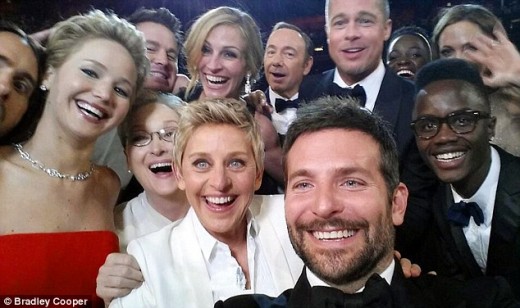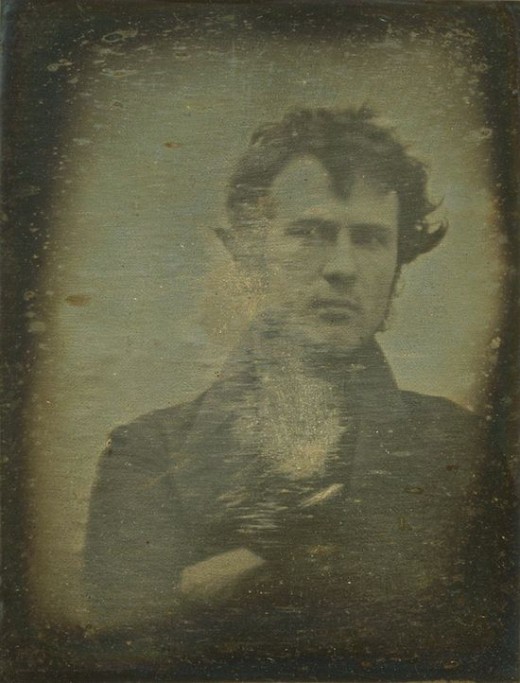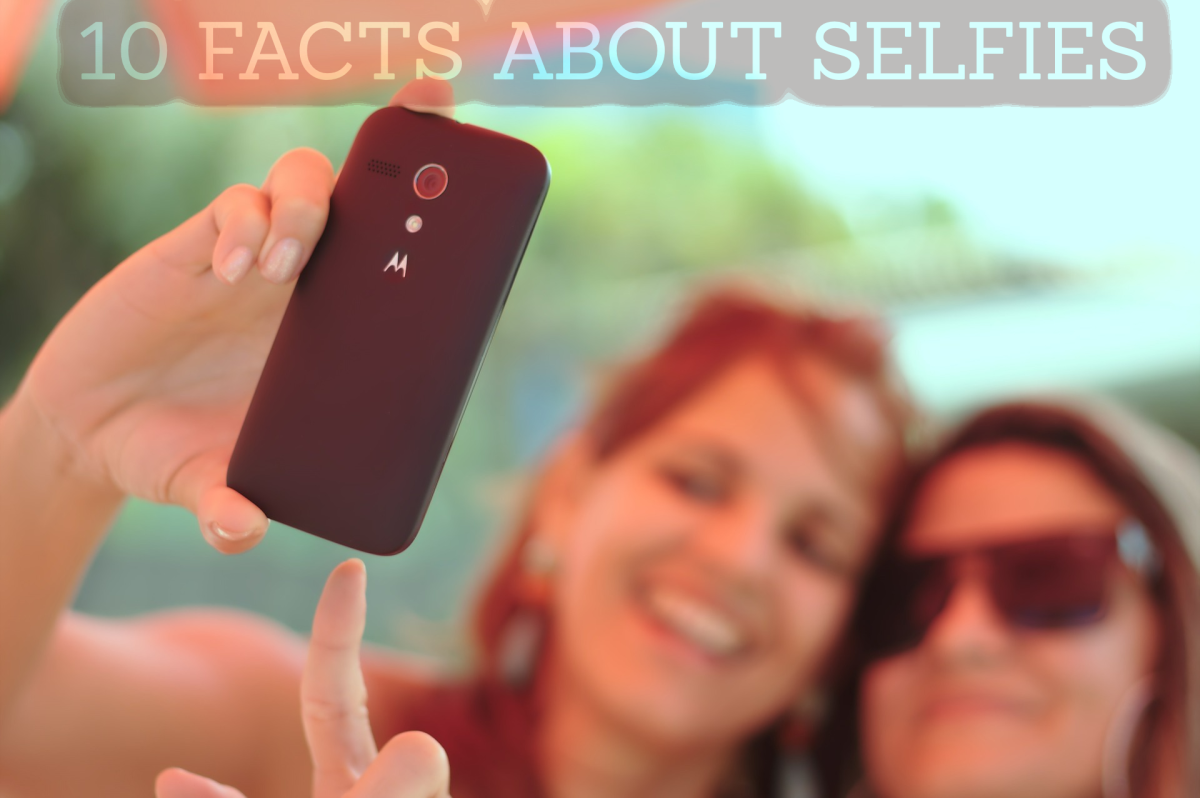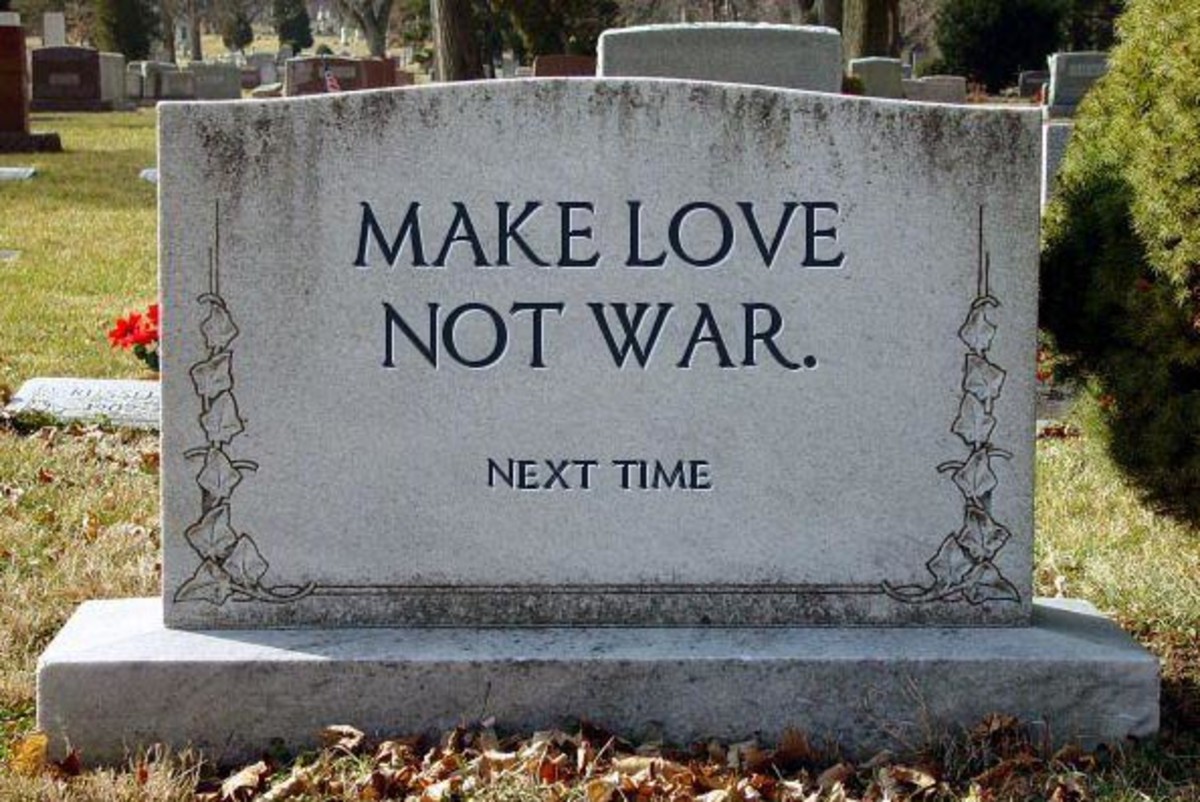Who Took the First Selfie? A History of the Latest Craze

The word selfie is immersed in today's culture. From the biggest selfie (or group selfie, rather) taken by Bradley Cooper, Ellen Degeneres, and several other big name celebrities, to Kim Kardashian being named the "selfie queen" of 2013 and publishing a book entirely of her own selfies, it seems that this trend will not end soon.
Taking selfies is often attributed to Millennials, people who were born sometime between the early 1980s and 2000s, like myself, and is often seen as one of the reasons why we are overly narcissistic, self-centered, self-absorbed - however you want to spin it. Time Magazine published an article by John Stein on Millennials in May of 2013, with the image of a young woman snapping a selfie on the cover. This article was generally made to describe how narcissistic our youth has become, how unmotivated, and lazy, and generally no-good we are. Despite the fact that this isn't exactly a new phase, as Time Magazine has published articles very similar to this every 5-10 years, and there are some pretty damning facts that a lot of the 'proof' could just be entirely wrong.
So, taking this into account, that humans born in different generations tend to have a disconnect with each other and believe the younger generations to be heavily narcissistic, we should also take a look at the selfie, one of the prime examples of narcissism in this day and age.
Do you take selfies?
Who Coined the Term Selfie?
The word selfie did not enter the Oxford English Dictionary until 2013, and it was stated as the word of the year. But how far back does the etymology of the word selfie go?
That is a hard question to answer, because most slang starts off small but gradually becomes common use before we ever take the time to begin studying it. Most people officially attribute the coined phrase to Australian student "Hopey" (later identified as Nathan Hope), who used the term selfie after splitting his lip and getting several stitches in 2002. However, Hope denies being the first person to ever use the term selfie, and has stated that it was just what a picture of oneself by oneself was called. However, that is probably the very first time it was ever used in written form to a public mass (i.e. on an online forum). It is most likely a shortening of the term self-portrait.

Who Took the First Photographed Selfie?
While selfies are most commonly thought to be taken by teenage girls, the first actual photographed selfie that we know of was taken by Robert Cornelius back in 1839. Yes, Baby Boomers, Generation X'ers, and all, the first selfie was not taken by a teenage girl, or Kim Kardashian, but a 30-year-old man a little under two centuries ago. This was also one of the first photographs of a person, indicating that the desire to capture the image of oneself is not exactly a new trend.
About 60 years later, the portable Kodak Brownie box camera led to more selfies being taken, though, unlike today's selfie, which is generally taken with a front-facing camera at a high, outstretched angle, these selfies were more often than not taken in front of a mirror, taken at about waist-level. Since then, technology has only continued to evolve at exponential levels, and the selfie hasn't stopped.

Photographed Selfie?
Yes. While it's apparent that we've actually been taking selfies ever since the technology has become available to us, since selfie is generally regarded as slang for 'self-portrait', shouldn't we also take standard, painted self-portraits as selfies? After all, they are taking a picture (a synonym to portrait) of oneself by oneself, in an effort to capture one's image.
It is difficult to find who exactly the first person to ever make a self-portrait is, but certainly one of the earliest would be Albrecht Durer, who systematically made self-portraits over the course of his life, one of the earliest being when he was 13 in 1484. Rembrandt also made a series of self-portraits throughout his lifetime. Since then, many of the artists that we consider the greats, from Da Vinci, to Van Gogh, have made a self-portrait of themselves.
So What Does This Mean?
Ever since we have been able to see ourselves, we have tried to make images of ourselves. Artists tend to be a little more successful in capturing the likeness of themselves, but who's to say that a person's crudely drawn stick figure isn't actually just a simple (albeit bad) self-portrait of themselves?
Is this self-centered or narcissistic? In a way. To some extent nearly everyone on this earth is self-absorbed to some extent. And yes, while most selfies are taken in one's bathroom with no one around, trying to find one's best angle, many of them are taken with friends and family, at special events. Capturing the moment, how you feel at the moment, and who you are with at the moment is not always trying to boost your inflated ego. Though, admittedly, who doesn't like a few likes on their selfie? Is it vain and conceited? Probably, but it's not something that sets us as Millennials apart from any other generation. It just means we have the technology to take more self-portraits when we want to.






